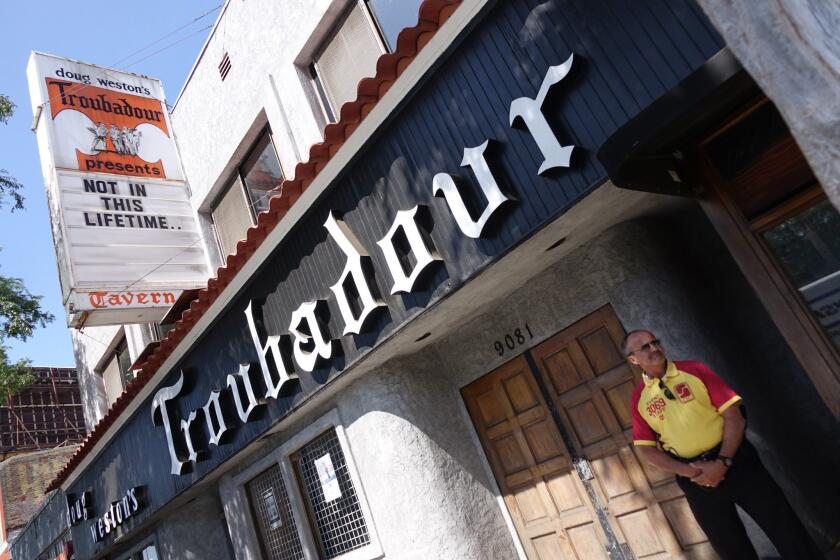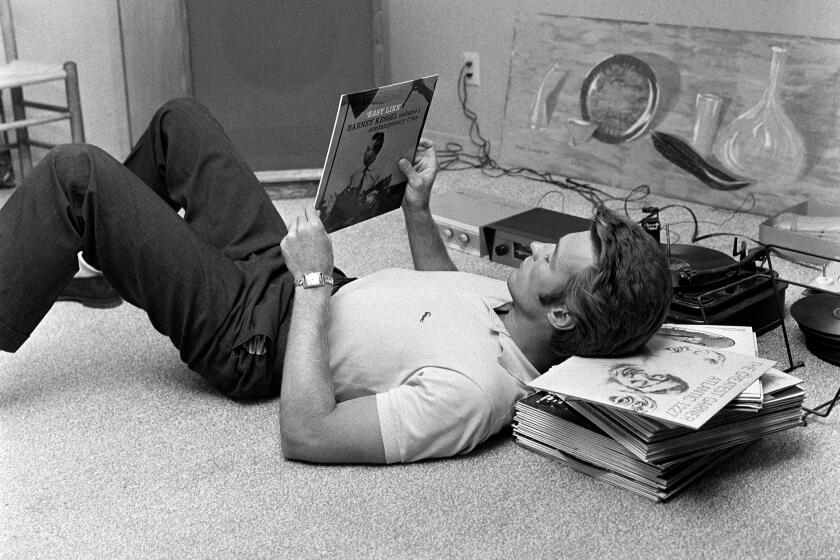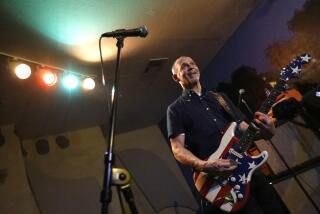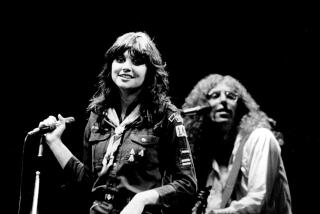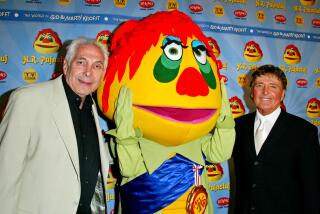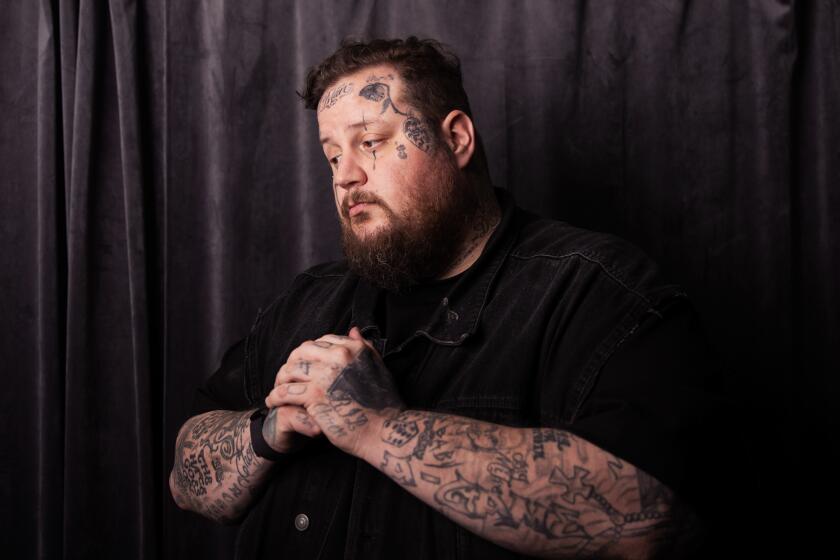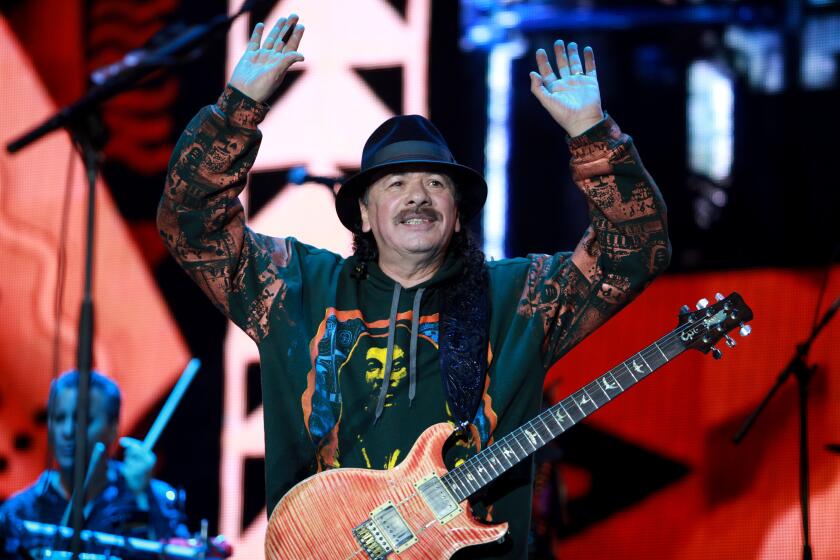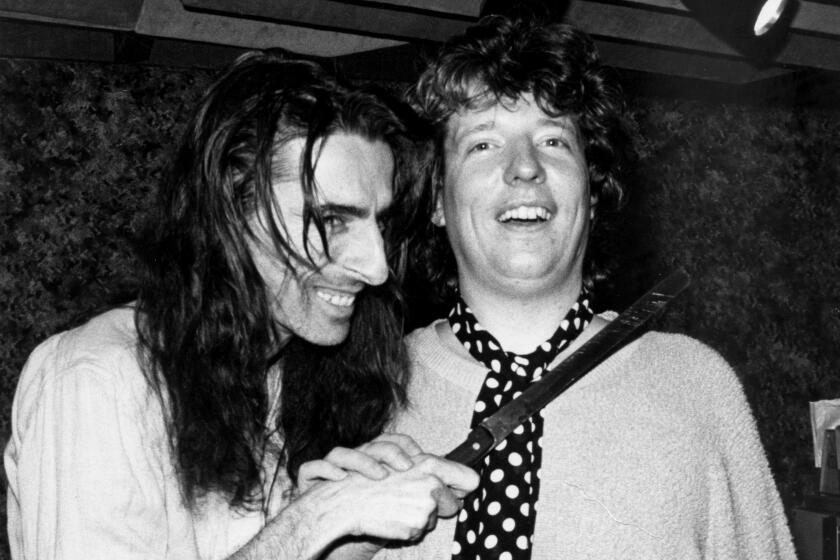Florian Schneider, co-founder of electronic pioneers Kraftwerk, dies at 73
- Share via
Florian Schneider, who co-founded the seminal German electronic band Kraftwerk in 1970 and went on to become a godfather of genres including synth-pop, hip-hop, electronic dance music and post-rock, has died.
One of the most important musicians of the computer age, Schneider died from cancer, according to a statement from the band.
“Kraftwerk co-founder and electro pioneer Ralf Hütter has sent us the very sad news that his friend and companion over many decades Florian Schneider has passed away from a short cancer disease just a few days after his 73rd birthday,” the band announced.
Schneider turned 73 on April 7.
The general manager of the Troubadour, which famously launched Elton John’s career, says ‘to survive, we’re going to need all the help we can get.’
It’s hard to overstate the ways in which Kraftwerk co-founders Schneider and Hütter transformed popular music. The New York Times once wrote that “what the Beatles are to rock music, Kraftwerk is to electronic dance music.”

The Beatles comparison is apt. As technological advances created electronic music instruments such as the Moog and ARP synthesizers, Schneider and Kraftwerk harnessed that energy to create simple, robotic rhythms that celebrated the sheer weirdness of these new sounds. Those ideas have since supplanted Beatles-esque rock innovations in contemporary pop music.
The band issued a string of albums across the 1970s that upended pop music. The act’s breakthrough was 1974’s “Autobahn,” a worldwide smash that electronically simulated the experience of cruising down a German highway. In 1977, the title track from “Trans-Europe Express” became one of Kraftwerk’s most identifiable songs; it was later harnessed by pioneering rap artist Afrika Bambaataa and the Soul Sonic Force to create the 1982 smash “Planet Rock.”
As source material, Kraftwerk’s music has been sampled by artists Dr. Dre, Pharrell Williams, De La Soul, Outkast, Will Smith, Lil Wayne and Madlib, among hundreds and hundreds all told.
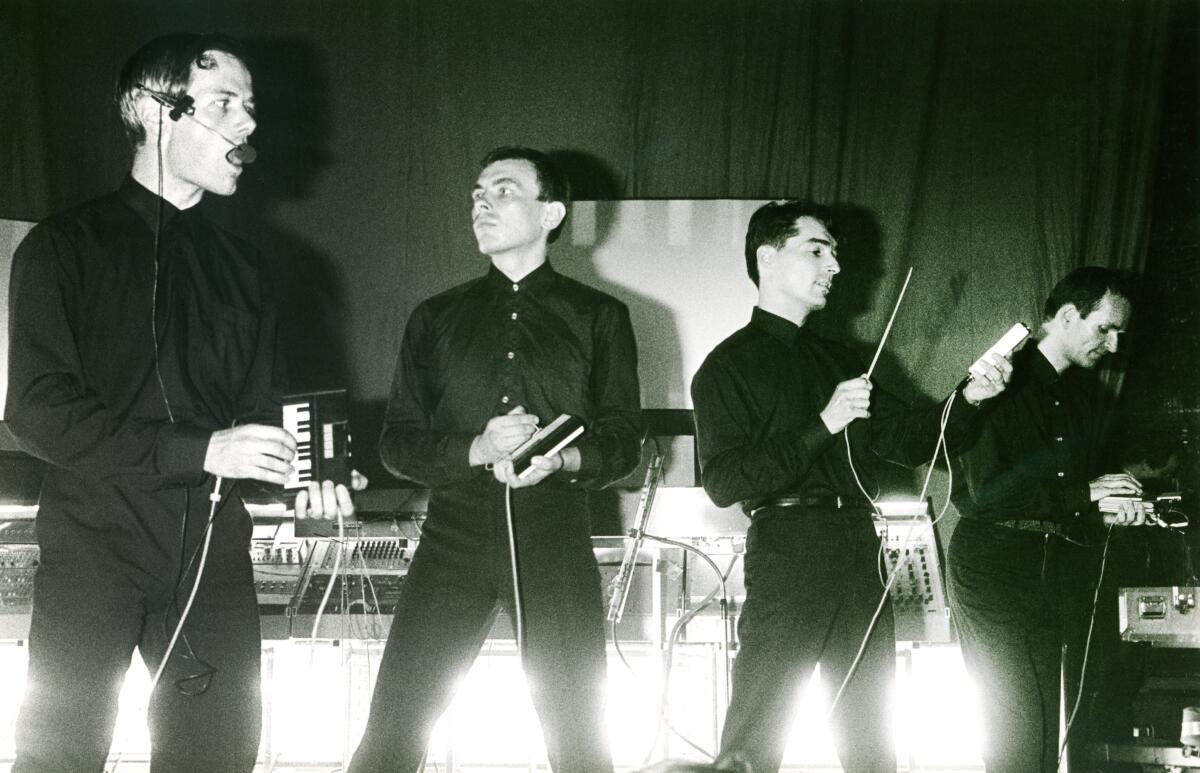
Born in Düsseldorf, Germany, two years after the end of World War II, Schneider grew up amid a culture annihilated by war and the Holocaust. In a 1976 interview, Hütter depicted his and Schneider’s generation as having “lost its own identity, and that never even had any. In clubs as the band was establishing itself, you never heard a German record, you switched on the radio and all you heard was Anglo-American music.” Hütter added, “That’s okay, but we needed our own cultural identity.”
They met while studying at the Academy of Arts in Remscheid, a West German school equidistant from Cologne and Düsseldorf. By the time they were 21, the pair had formed Organisation, whose 1968 album “Tone Float” is considered a formative moment in the birth of the so-called krautrock movement of German bands including Can, Tangerine Dream, Neu!, Guru Guru and Cluster.
How to keep Coronavirus stress at bay: Listen, really listen, to your favorite albums, front to back, without distraction.
“The whole complex we use can be regarded as one machine, even though it is divided into different pieces,” Schneider told Lester Bangs in “Kraftwerkfeature,” a 1975 story for Creem magazine. Using the German title for Kraftwerk’s 1975 album, “The Man-Machine,” Schneider continued: “The Mensch-Maschine is our acoustic concept, and Kraftwerk is the power plant. If you plug in the electricity, then it starts to work. It’s feedback. You can jam with an automatic machine, sometimes you and it alone in a studio.”
The group dubbed that studio KlingKlang, and across four decades and 10 studio albums, Schneider and Hütter’s engine of creativity churned out humming rhythms and synthetic melodies. Those myriad ideas pulsed around the world like binary code.
As with a machine, Kraftwerk’s parts were replaceable. Among those who played with the band include Klaus Dinger, Michael Rother, Emil Schult, Wolfgang Flür, Klaus Röder and Karl Bartos.
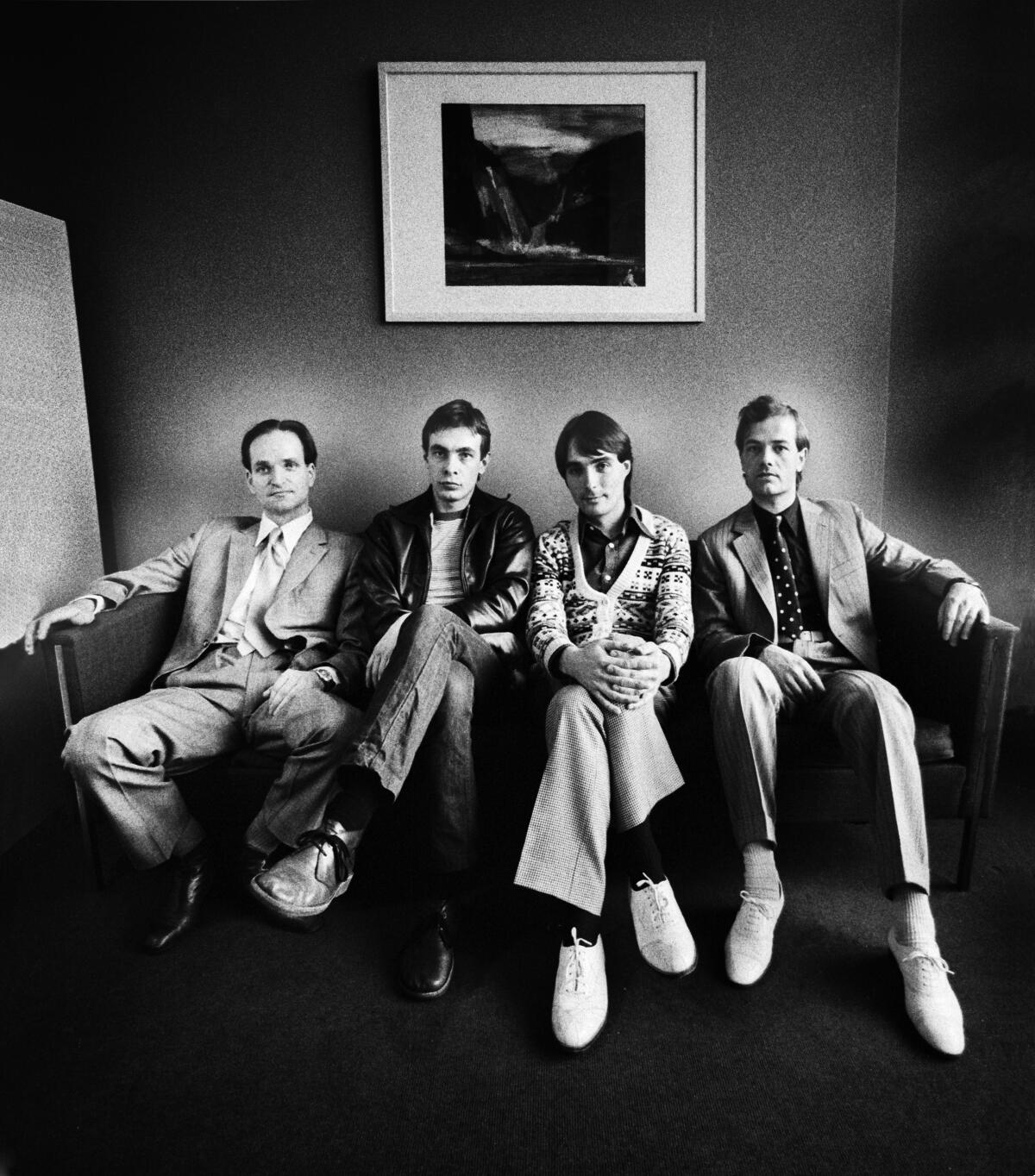
Schneider and Hütter, as tight a creative partnership as Rodgers and Hammerstein or Lennon and McCartney, formed Kraftwerk in 1970 and issued their self-titled debut that same year. Consisting of four songs ranging from eight to 12 minutes, the experimental work was driven by Schneider’s electronically altered flute playing and light percussion.
Two years later, “Kraftwerk II” further explored tape manipulation, electronic effects and feedback-generated echo. Most notably, extended work “KlingKlang” foreshadowed the group’s meditative, sophisticated explorations.
Asked about those first releases backstage during one of Kraftwerk’s 2014 performances at Walt Disney Concert Hall, Hütter politely called them “more like a rehearsal tape than an album,” but within their grooves lie the groundwork for “Autobahn.”
Released after the 1973 collaborative album “Ralf and Florian,” which wasn’t advertised as a Kraftwerk album but contained Kraftwerk iconography on the cover, “Autobahn” brought the band to prominence. Arriving as electronic music was establishing itself among discriminating rock listeners, it found the two minimizing the use of acoustic instruments in favor of increasingly portable electronic machines.

“Radio-Activity” (1975) was a pensive, ethereal conceptual album about the power of radio. Similarly, “Trans Europe Express,” from the 1977 album of the same name, was a love letter to the European train system. “Europe Endless” was an elegantly mesmerizing travelogue of European life. Schneider sang of “promenades and avenues,” of “real life and postcard views,” “parks, hotels and palaces” and “elegance and decadence.”
For 1978’s “The Man-Machine,” Kraftwerk further predicted the increasingly blurry line between man and machine. The group’s most commercially accessible album to date, its computer-designed tones generated the dance-floor hit “The Model.” The group’s 1981 album “Computer World,” released as the Apple II personal computer was transforming modern life, was an oft-cheeky celebration of the impending electronic revolution. “Pocket Calculator” was a three-minute love song to a device, while “Numbers” was a dryly funky dance track with lyrics consisting solely of a robotic voice uttering different numbers. It has been sampled by artists including Aphex Twin, 2 Live Crew and Lil B.
The band went on a five-year recording hiatus after “Computer World.” During that downtime, a legion of DJs started connecting musical dots, and Kraftwerk’s defiantly Teutonic sound began appearing on black radio playlists.
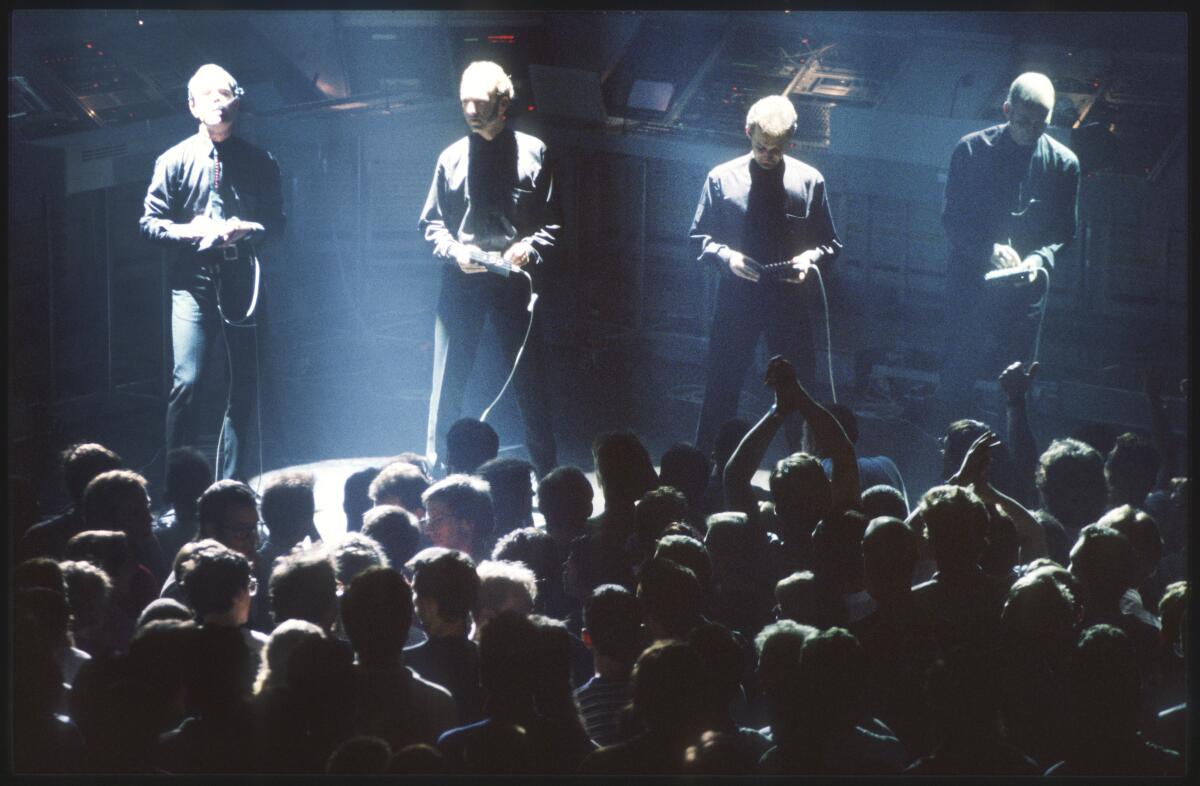
In early 1980s Detroit, influential radio DJ the Electrifying Mojo often rocked Kraftwerk in his nightly sets mixed with Parliament, the B-52’s and Prince. As recounted in “Can’t Stop Won’t Stop,” critic Simon Reynolds’ history of techno and rave culture, Kraftwerk’s 1983 single “Tour de France” raced through the airwaves to inspire techno innovators Juan Atkins, Derrick May and Kevin Saunderson. (Life-long cyclists, Schneider and Hütter used to take to the road to explore cities during tour stops.) Detroit DJ Carl Craig captured Kraftwerk’s allure in the black community, describing the group’s members as being “so stiff, they were funky.”
That mechanical rhythm resonated in Detroit, May once said, “because of the industry in Detroit, and because of the mentality,” adding that “it sounded like somebody making music with hammers and nails.”
A few hours away in Chicago, radio DJs Ron Hardy and Frankie Knuckles were spinning similarly boundary-breaking Kraftwerk tracks, inspiring producers to harness Roland 808 rhythm boxes and make the earliest house music. In England, Kraftwerk inspired synthesizer-driven bands such as the Human League, Depeche Mode, New Order and Duran Duran.
“To me, this was the soundtrack of the cities. It was like a manifesto that wrapped up graphic design, photography and music, all in the same bag,” the Human League’s Martyn Ware said of Kraftwerk’s “The Man-Machine,” according to Uwe Schütte’s book “Kraftwerk: Future Music From Germany.”
As if by design, Kraftwerk powered down its studio as its influence grew. After the disappointing reception of “Electric Café” in 1986, Kraftwerk mostly stepped away from the studio to focus on live performance.
In concert, Kraftwerk’s members literally acted as robots. During its many tours, the quartet wore identical outfits and stood before identical consoles as images and words flashed on background screens. So well concealed was their gear that it wasn’t even clear if Kraftwerk’s members were playing in real-time or simply standing and looking at the crowd for 90 minutes.
In 2000, the band composed the theme song to the Expo 2000 in Germany and participated in a series of collaborative productions involving artists influenced by Kraftwerk’s sound.
Schneider departed the group in 2008, which effectively broke up the band. Since then, Hütter has toured with three other members, most notably during a series of 3-D concerts. In 2016, Kraftwerk made its Hollywood Bowl debut.
Schneider wasn’t there, but only veteran fans would have noticed. Kraftwerk, the machine, cruised through its greatest hits with the efficiency of a Tesla sedan, just as Schneider designed.
More to Read
The biggest entertainment stories
Get our big stories about Hollywood, film, television, music, arts, culture and more right in your inbox as soon as they publish.
You may occasionally receive promotional content from the Los Angeles Times.
